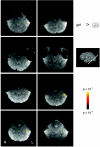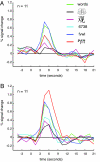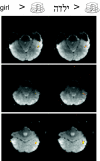Visual word processing and experiential origins of functional selectivity in human extrastriate cortex
- PMID: 17502592
- PMCID: PMC1885632
- DOI: 10.1073/pnas.0703300104
Visual word processing and experiential origins of functional selectivity in human extrastriate cortex
Abstract
How do category-selective regions arise in human extrastriate cortex? Visually presented words provide an ideal test of the role of experience: Although individuals have extensive experience with visual words, our species has only been reading for a few thousand years, a period not thought to be long enough for natural selection to produce a genetically specified mechanism dedicated to visual word recognition per se. Using relatively high-resolution functional magnetic resonance imaging (1.4 x 1.4 x 2-mm voxels), we identified a small region of extrastriate cortex in most participants that responds selectively to both visually presented words and consonant strings, compared with line drawings, digit strings, and Chinese characters. Critically, we show that this pattern of selectivity is dependent on experience with specific orthographies: The same region responds more strongly to Hebrew words in Hebrew readers than in nonreaders of Hebrew. These results indicate that extensive experience with a given visual category can produce strong selectivity for that category in discrete cortical regions.
Conflict of interest statement
The authors declare no conflict of interest.
Figures




References
Publication types
MeSH terms
Grants and funding
LinkOut - more resources
Full Text Sources
Other Literature Sources

